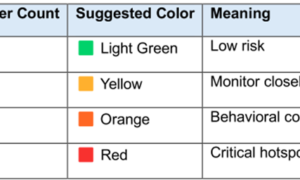Voice recordings are a great way to capture important information that cannot be written down. They are also helpful in recording business discussions, meetings, and interviews. Speech-translation technology like ways to translate voice recording to text is crucial because it allows speakers of many languages worldwide to communicate with one another, eradicating the language divide in global business and cross-cultural exchange.
Speech-to-text is a speech recognition software that uses computational linguistics to recognize and translate spoken words into text. It is also known as computer speech recognition or speech recognition.
Transcription services can transform these audio files into text format. This makes them easy to access and share with others.
Speed
Using translation software that can convert voice recordings to text can make it faster and easier to create documentation that is relevant to your business. It can also help you improve client communication by translating their voices into your target language.
The speed at which transcription is completed largely depends on the quality of the translated audio file. The transcription process will take longer if the recording has multiple speakers, a muffled voice, or other issues. In addition, the accuracy of the transcription can be impacted by the type of accent or slang used in the audio.
An excellent online transcription platform will have the ability to transcribe multiple files at once, which can save you time. This is especially helpful if you are working with large volumes of files or a complex project. The Sonix text transcription platform, for example, is designed to be fast and accurate with minimal effort on your part.
One of the biggest challenges for linguists working on projects is communication with their clients. Various reasons, including a lack of understanding between the parties, can cause this. In such cases, it may be necessary to start the translation process over or reassemble a new team of linguists to complete the task. Luckily, there are ways to prevent these problems.
Convenience
If you’re in a hurry and need to write down something, you can use the built-in microphone of your iPhone to dictate it. Then, you can copy the dictation and paste it into your favorite text editor or email it. This is a great way to quickly get your thoughts down on paper and avoid the headache of typing them later.
Another way to save time is to use an online audio transcription service. Companies like GoTranscript hire expert transcribers to listen and convert your recordings to text carefully. These services can transcribe audio, from a conference to a podcast. They even offer a speech-to-text app so you can transcribe on the go.
The most significant advantage of using an online transcription service is that you can send any recording, and they will transcribe it for you at the best possible rate. These services will also provide you with a quality transcript that will be easy to understand. They also provide an editing function that allows you to highlight any errors. You can even pay a small fee for a premium transcript with punctuation. Besides, they can translate into several languages, including Spanish, German, French, Italian, and Russian.
SEO
One of the essential benefits of translating voice recordings to text is the ability to optimize your content for search engine optimization (SEO). This allows you to improve your rankings in Google search results and get more traffic to your website.
As a digital marketer, you likely have many podcasts, videos, and other audio files you need to create regularly. These can be great ways to share your knowledge and boost your SEO, but they sometimes offer limited searchability.
With a transcript, however, you can create a blog post that includes both the audio and text version of your podcast or video. This doubles your content and makes it more searchable.
It’s also a way to optimize your audio content for voice search, a growing interest for digital marketers. Unlike traditional searches, where users may use keyword phrases like “how to find the best restaurant in Boston,” voice searchers typically ask questions with more specific intent.
Understanding user intent, adjusting your content to address these questions, and using search tools to identify long-tail keywords can all help you create more voice-search-optimized content. For example, you can perform a Google or Bing search to see which keywords people are typing into their voice assistants when searching for products or services.
Learning curve
Getting your hands on one can be daunting, even for the most accomplished among us. The software is a tad pricey, a fair few bucks here and there and a hefty chunk of change there, and that’s not to mention the cost of the hardware itself. Not to mention the headaches associated with a mishap on the front end and the inevitable follow-ups.
It’s also a good idea to pick the brains of any neophyte with a vested interest in the dreaded department head. You might find yourself on the naughty list as we speak if you haven’t done your research.



































